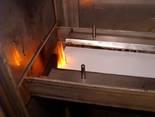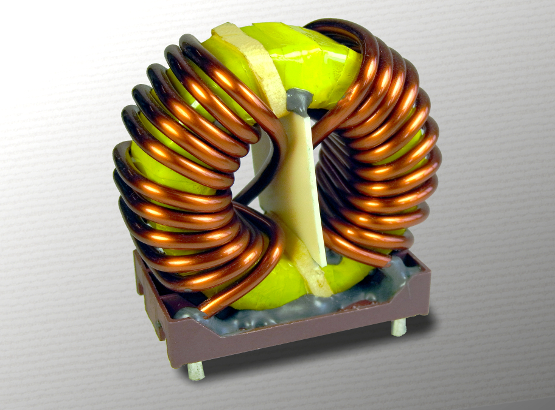>> Here you will find a link to the UL page with the option of entering the e-file number directly: UL Prospector
File number of CMC products at UL: OANZ2, E93622
(This page contains a comprehensive database of UL-recognized insulating materials from Underwriter Laboratories. Link to the original excerpt UL-Database for CMC Klebetechnik products: E93622)
Yellow Card for Filenumber E93622- CMC Klebetechnik GmbH
- Acetatesilk cloth tape, Cat. No. CMC 35160 rated 120 C
- Composite PET film insulating tape, Cat. No. CMC 65838, rated 155 C
- Glass cloth insulating tape, Cat. No. CMC 84170, rated 155 C
- Glass cloth insulating tape, Cat. No. CMC 84160, rated 130 C
- Glass cloth tapes, Cat.Nos. CMC 84170*, Cat.No. CMC 84150* rated 180 C
- Kapton tapes, Cat.Nos. CMC 70110*, CMC 70100, CMC 70105* rated 180C
- Laminate copper/Kapton tapes, Cat.Nos. CMC 38381, CMC 38390, CMC 38391, CMC 38393, CMC 38394 rated 180 C
- Laminate copper/Nomex tapes, Cat.Nos. CMC 38281, CMC 38290, CMC 38291, CMC 38293, CMC 38294 rated 155 C
- Laminate copper/polyester tapes, Cat.Nos. CMC 38181*, CMC 38190*, CMC 38191*, CMC 38193*, CMC 38194* rated 130 C
- Laminate crepe paper/ polyester tape, Cat. No. CMC 18100, CMC 18102 rated at 130 C
- Laminate Kapton/copper/Kapton tape, Cat. No. CMC 38382 rated 180 C
- Laminate Nomex/copper/Nomex tapes, Cat. No. CMC 38282 rated 155 C
*Complies with flame retardant requirements, when so marked.
- Laminate nomex/glass cloth tape, Cat. No. CMC 19708, rated 155 C
- Laminate PEN-Film/glass cloth tape, Cat. No. CMC 61200, rated 155C
- Laminate polyester/copper/polyester tape, Cat.No.CMC 38182 rated 130C
- Nomex-polyamide tapes, Cat. Nos. CMC 65101, CMC 65102, CMC 65103* rated 155 C; Cat. Nos. CMC 65120, CMC 65121, CMC 65122*, CMC 65123* rated 180 C
- Nomex tapes, Cat. No. CMC 65772* rated 130 C; Cat. No. CMC 65100* rated 155 C
- PEN-Film tape, Cat. No. CMC 61100, rated 155 C
- Polyester tapes, Cat. Nos. CMC 10300, CMC 10160, CMC 10145, CMC 10260, CMC 10858, CMC 10966 rated 130 C
- Polyester/fleece tapes, Cat. Nos. CMC 16100*, CMC 16700, CMC 16701 rated 130 C
- Polyimide insulating tape , Cat. No. CMC 70110, rated 180 C
- Shrinkable polyester tapes, CMC 11766 rated 130 C
Marking: Company name and catalog designation printed on the carton, wrapper or core.
Ul-File numbers of the slides
| Manufacturer | Trade name | Ul-File |
| Du Pont | Mylar® A | E93687 |
| Mitsubishi | Hostaphan® RN | E53895 |
| Covestro | Makrofol® EN | E168120 |
| Toyobo | Teonex® | E51743 |
| Sabic | Ultem® | E103380 |
| Saint Gobain | Norton FEP | E311412 |
| Du Pont | Nomex® 410, 411, E 56A | E34739 |
| Du Pont | Kapton® | E39505 |
| Victrex | Aptiv™ | E161131 |
| Toray | Torelina® | E86423 |
Insulation systems for transformers and electric motor manufacturers
Insulation systems offer considerable savings potential for component manufacturers when it comes to delivering to customers or countries that require UL approval. By using only UL-listed components (coil carrier, impregnating resin, enameled wire, insulation tape) for a transformer, for example, the approval test can be significantly simplified and, above all, shortened.
Insulation systems combine tried-and-tested insulation materials that have been tested, e.g. by the sealed tube test.
Several electrical insulation tapes from CMC Klebetechnik are approved for use in the following Du Pont insulation systems (class B/F)
- Class 130 Crastin® PBT, Mylar®, Nomex®, Herberts® Electro C190HE
- Class 155 Crastin® PBT, Mylar®, Nomex®, Herberts® Electro C290HE
- Class 130 Rynite® PET, Mylar®, Nomex®, Herberts® Electro R150HE
- Class 155 Rynite® PET, Mylar®, Nomex®, Herberts® Electro R201HE
- Class 155 Rynite® PET, Mylar®, Nomex®, Herberts® Electro R203HE
- Class 155 Zytel®, Crastin® PBT, Mylar®, Nomex®, Herberts® Electro CZ255HE
- Class 130 Zytel®, Mylar®, Nomex®, Herberts® Electro Z130HE
- Class 130 Zytel®, Mylar®, Nomex®, Herberts® Electro Z150HE
- Class 155 Zytel®, Mylar®, Nomex®, Herberts® Electro Z200HE
Another interesting website for researching insulation materials can be found at http://www.ul.com/database
This page contains a comprehensive database of UL-listed insulating materials from Underwriter Laboratories.
The tapes listed in the EIS include the types:
CMC 10966, 10820, 65120, 65100, 70100, 70110, 80725, 16100, 84170, 84160, 84150, 65768, 16701, 18102, 16700, 17713, 65767 (materials used: polyester, Nomex, polyester fleece, Kapton, crepe paper, glass fabric).
There are many other insulation systems with adhesive tapes from CMC Klebetechnik, but these have been submitted to UL by individual customers and are not available for general use.
Comparison of standards UL510 / UL746 / UL94 with regard to flammability
UL distinguishes between (homogeneous) plastics, whose property requirements are described in the UL 746 series of standards, and UL 510, which is a dedicated standard for electrical insulating tapes.
The tests and test methods differ considerably in some cases.
The UL 94 test standard is a standard that can be used to test the flammability of plastics that are a structural component of devices and housings. It is NOT intended for adhesive tapes. Sample thickness is usually 0.4 mm to 3 mm. The samples are flamed vertically (vertical) and horizontally (horizontal).
For thin films, the test is modified and the results are given as follows: UL94 - VTM0 (TM stands for Thin Material).
With UL 510, however, the adhesive tape is wound three times on top of each other on a metal rod with a 50% overlap and then flamed. In this test, polyester adhesive tapes (PET: UL94 - VTM2) also achieve the "flame-retardant" classification.
The UL 510 test method is therefore in no way comparable with the flame test in UL 94, which is why there are no adhesive tapes with a UL 94 classification!
UL 510 and IEC 60454
Both standards UL 510 and IEC 60454 are applicable to adhesive tapes (also formerly DIN 40633, VDE 0340).
Principle of the flammability test:
Three layers of adhesive tape are wrapped overlapping on a steel rod. A defined flame is then applied to the test specimen five times for 15 s with a 15 s pause in between. Passed if (short version): No further burning beyond 60s and no dripping of burning or smouldering material in any of the five flame applications.
Test result if passed: flame retardant

UL standard UL-94-VTM - Applicable for plastics in sheet or film form
A test specimen (12.7 mm) is placed vertically suspended in the test area and flamed with a Bunsen burner. For thin materials (films, thin materials = TM), the test specimen is clamped in a frame to prevent the specimen from rolling up when exposed to the flame. This test is normally intended for materials from 2 mm thick and not for adhesive tapes.
One group of flame-retardant films with very good self-extinguishing properties is the CMC 27xxx product group (polypropylene films with UL 94 - V0 classification). Nomex and Kapton adhesive tapes also have similarly good properties.
Result:
- V-0 Flame goes out within 10 seconds
- V-1 Flame extinguishes within 30 seconds and no burning material drips down
- V-2 Flame goes out within 30 seconds but may drip
- DIN 40633: Flammability classes
- Bu1 - Bu3 Bu1 and Bu2 as above
- Bu3: burns for longer than 30 seconds, but goes out within 60 seconds
Corresponds to the UL 94 V test, but the test specimen is placed horizontally in the test flame. This test is less demanding with regard to the self-extinguishing properties of the material.

Typical requirement for electrical products in outdoor applications according to UL 746C (e.g. solar inverters):
UL 94 VTM0, 5kV breakdown voltage, CTI=2, HAI=3, HWI=4
UL 94 VTM2, 5kV breakdown voltage, CTI=2, HAI=2, HWI=2
|
UL 746C |
Target |
Kapton FN * |
Kapton XP919* |
Formex GK |
Kapton HN |
Kapton MT |
Aptiv 1000* |
Nomex 410 |
Mylar A |
| CTI ** |
2 (>3) |
1 |
1 |
0 |
4 |
4 |
3 |
3 |
1 |
| HAI |
3 (>4) |
4 |
0 |
0 |
4 |
1 |
4 |
3 |
4 |
| HWI |
4 (>5) |
0 |
0 |
4 |
0 |
0 |
5 |
0 |
5 |
| UL 94 |
0 (>1) |
0 |
0 |
0 |
0 |
0 |
1 |
0 |
2 |
| Heat class |
|
H, 240°C |
H, 240°C |
115°C |
H, 240°C |
H, 240°C |
H |
H |
B |
| Usability |
|
No |
Yes |
Yes |
No |
No |
No |
No |
No |
* No standard, no stock items
** Dependent on the soiling class, for 1 or 2 CTI=4 is sufficient, for soiling class 3 it must be CTI=3
Further information, in particular on the film properties, can be found via the "Link to UL" (enter the file number in the search window of the UL page) or via our link list (under "General information") directly from the manufacturers. The adhesives used are usually designed for a continuous temperature of at least 130°C. Many of our UL-recognized adhesive tapes are tested in accordance with UL 510 and are often flame retardant. For many films (e.g. Kapton) there are variants that are designed for special requirements such as corona resistance, heat conduction or tracking resistance. Almost all adhesives are characterized by very good impregnant resistance. However, due to the wide variety of impregnating agents, it is not possible to make a general statement. Further information on the processing of adhesive tapes and the adhesives used.
Note on "flameability": UL94 is the standard for insulation materials. The suffix H means "horizontal", V means "vertical" arrangement of the test object during the burning test. "VTM" means that a thin insulation material (i.e. classically a film) was tested vertically. The standard for adhesive tapes is UL 510. The test arrangement differs in that the adhesive tape is stuck to "something" (steel rod) as in the later application and then flamed (similar to IEC 60454-2).

Basic information on the UL 1446 standard
Electrical products are expected to have a mature technical standard as well as a high level of reliability and operational safety. Proof of compliance with such safety requirements is provided by certifications.